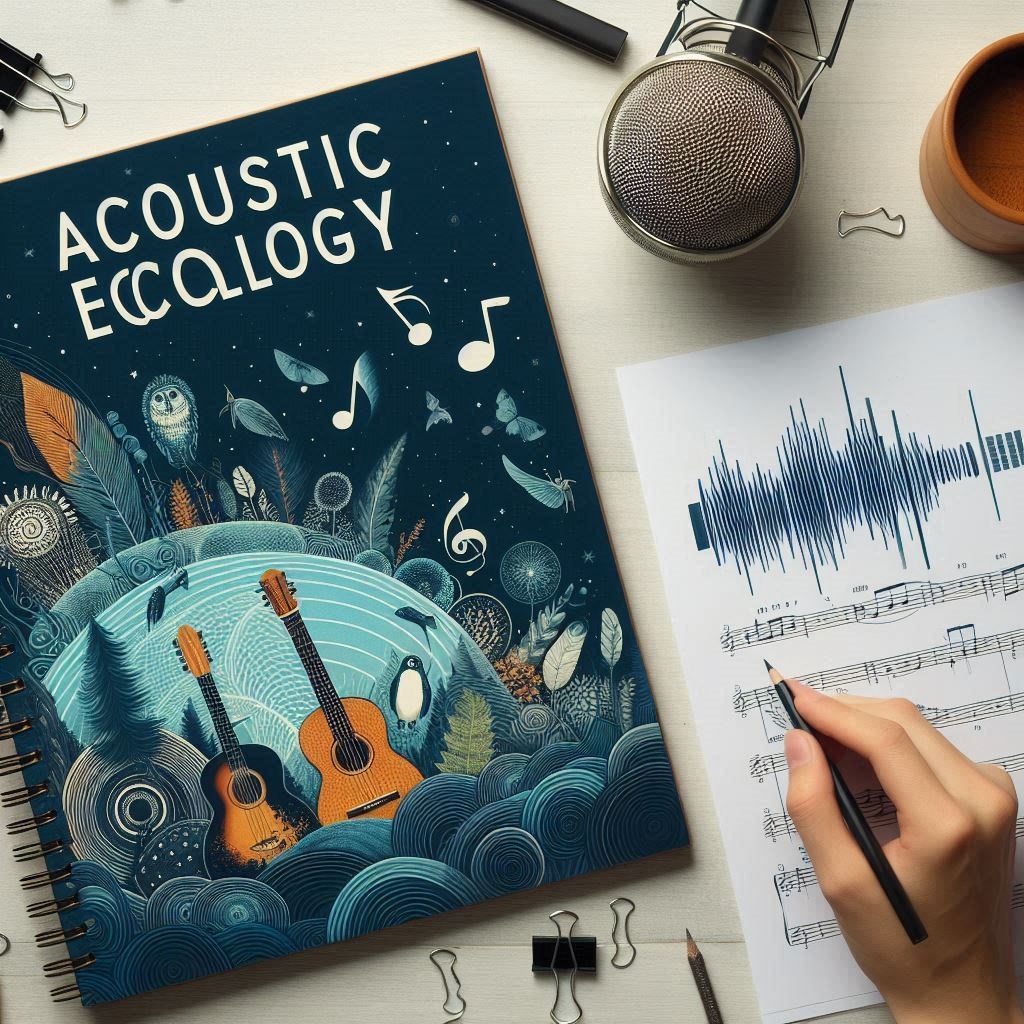Introduction to Acoustic Ecology
Acoustic ecology is the study of the relationship between living organisms and their environment through sound. This interdisciplinary field explores how soundscapes affect and reflect ecological processes, and how organisms use sound for communication, navigation, and environmental awareness. Acoustic ecology integrates concepts from biology, environmental science, and sound studies to understand how acoustic environments influence and are influenced by ecological dynamics.
The Importance of Acoustic Ecology
Understanding acoustic ecology is crucial for several reasons. Firstly, sound is a vital component of ecosystems, influencing behaviors such as mating, foraging, and territory establishment. Secondly, changes in soundscapes can indicate shifts in environmental conditions, such as habitat degradation or climate change. Lastly, studying acoustic environments helps in conserving biodiversity by preserving natural soundscapes and understanding how noise pollution impacts wildlife. For a detailed introduction, see Acoustic Ecology Institute.

Key Concepts in Acoustic Ecology
1. Soundscapes
A soundscape is the acoustic environment as perceived by humans or other organisms. It includes both natural sounds, such as bird calls and river flows, and anthropogenic sounds, such as traffic and industrial noise. Soundscapes are crucial for understanding how organisms interact with their environment and how sound affects their behaviors. For more on soundscapes, visit Soundscapes.org.
2. Bioacoustics
Bioacoustics is the study of the production, transmission, and reception of sound by animals. This includes the study of animal communication, echolocation, and sound production mechanisms. Bioacoustics provides insights into how animals use sound to interact with their environment and each other. Learn more at Bioacoustics.org.
Key Areas of Bioacoustics
1. Mechanisms of Sound Production
Understanding how animals produce sound involves studying the anatomical structures and physiological processes involved. For example, in birds, sound production occurs in the syrinx, an organ located at the base of the trachea. In mammals, vocalizations are produced by the larynx. Research into these mechanisms helps in understanding how different species generate a variety of sounds, from complex songs to simple calls. For more information on sound production mechanisms, see NCBI on Vocal Mechanisms.
2. Functions of Vocalizations
Animal vocalizations serve various functions, including communication, territory marking, mate attraction, and navigation. For instance, whales use complex songs to communicate over long distances, while crickets produce mating calls to attract potential partners. Studying these functions provides insights into how animals use sound to adapt to their environments and interact with each other. Explore more on vocal functions at PLOS ONE on Vocal Functions.
3. Echolocation and Navigation
Echolocation is a specialized form of bioacoustics used by certain animals, such as bats and dolphins, to navigate and hunt in the dark. These animals emit high-frequency sound waves that bounce off objects and return as echoes, allowing them to build a mental map of their surroundings. Research in this area explores how echolocation works, its evolutionary origins, and its applications in technology. For detailed studies on echolocation, visit ScienceDirect on Echolocation.
4. Acoustic Communication in Social Structures
Many animals use acoustic signals to maintain social bonds and coordinate group activities. For example, primates use vocalizations to communicate within troops, while elephants produce low-frequency rumbles that travel long distances to coordinate with other herd members. Studying acoustic communication helps researchers understand social dynamics, group cohesion, and the evolution of complex social structures. For more on social acoustic communication, check Royal Society Publishing on Social Communication.
Applications of Bioacoustics
1. Conservation Efforts
Bioacoustics is increasingly used in conservation efforts to monitor wildlife populations and assess habitat health. Acoustic surveys can detect the presence of endangered species, track their movements, and evaluate the impacts of habitat changes or human activities. For instance, researchers use acoustic monitoring to study the effects of deforestation on bird populations. For more on conservation applications, visit Nature on Conservation Monitoring.
2. Environmental Impact Assessments
Bioacoustics helps assess the impact of environmental changes, such as noise pollution and habitat destruction, on animal behavior and well-being. By analyzing changes in vocalization patterns, researchers can gauge the effects of anthropogenic noise on wildlife and implement mitigation strategies. This approach is crucial for developing policies to minimize environmental impacts. For detailed assessments, check ScienceDirect on Environmental Impact Assessments.
3. Technological Innovations
Recent advancements in bioacoustics technology, including the development of sophisticated recording equipment and data analysis software, have expanded research capabilities. These innovations enable researchers to capture high-resolution sound data, analyze complex vocalizations, and model acoustic environments. For updates on technological advancements, visit TechCrunch on Bioacoustic Technology.
Challenges in Bioacoustics
1. Data Collection and Analysis
Collecting and analyzing bioacoustic data can be challenging due to factors such as background noise, varying acoustic environments, and the complexity of animal vocalizations. Researchers must use advanced techniques and equipment to isolate and interpret meaningful sound signals. For more on data collection techniques, check PLOS ONE on Data Collection.
2. Environmental Variability
Environmental factors, such as weather conditions and habitat changes, can affect the quality and consistency of acoustic data. Researchers must account for these variables when analyzing bioacoustic data to ensure accurate interpretations. For insights on managing environmental variability, visit Springer on Ecological Data.
3. Integration with Other Research Areas
Integrating bioacoustics with other research areas, such as behavioral ecology and conservation biology, is essential for a comprehensive understanding of animal behavior and ecosystem dynamics. Collaboration across disciplines enhances the applicability and impact of bioacoustic research. For more on interdisciplinary approaches, see JSTOR on Interdisciplinary Research.
3. Acoustic Monitoring
Acoustic monitoring involves the use of technology to record and analyze environmental sounds. This can be used to track animal populations, detect changes in soundscapes, and assess the impacts of noise pollution. Acoustic monitoring tools include microphones, recorders, and software for analyzing sound data. For an overview of acoustic monitoring technologies, see Nature’s Overview on Acoustic Monitoring.
Applications of Acoustic Ecology
1. Wildlife Conservation
Acoustic ecology plays a vital role in wildlife conservation by providing data on animal populations, behavior, and habitat use. Acoustic monitoring can help detect endangered species, track their movements, and understand their habitat needs. For example, researchers use acoustic surveys to monitor bat populations and their responses to habitat changes. For more on conservation applications, visit Wildlife Conservation Society.
2. Urban Planning and Noise Pollution
In urban areas, understanding acoustic ecology helps address issues related to noise pollution. By analyzing soundscapes, urban planners can design spaces that minimize disruptive noises and enhance the acoustic environment for residents. Acoustic ecology also contributes to creating sound maps that guide the development of quieter urban areas. For information on urban noise management, see EPA Noise Pollution.
3. Ecosystem Health Monitoring
Soundscapes can serve as indicators of ecosystem health. Changes in the diversity and abundance of sounds can signal alterations in habitat quality or the presence of environmental stressors. By monitoring these changes, researchers can assess the health of ecosystems and implement conservation strategies. For further reading on this topic, visit JSTOR on Ecosystem Health.
Challenges in Acoustic Ecology
1. Data Collection and Analysis
Collecting high-quality acoustic data can be challenging due to environmental factors, such as weather and background noise. Analyzing this data requires sophisticated equipment and software, as well as expertise in interpreting complex sound patterns. Advances in technology are helping address these challenges, but limitations remain. For more information on acoustic data analysis, visit Frontiers in Veterinary Science.
2. Human Impact
Human activities, such as industrialization and urbanization, can significantly alter natural soundscapes and impact wildlife. Managing and mitigating these impacts requires coordinated efforts across various sectors, including environmental policy, urban planning, and public awareness. For insights on mitigating human impact, see Nature on Human Impact.
3. Integration with Other Ecological Studies
Acoustic ecology must be integrated with other ecological studies, such as population ecology and conservation biology, to provide a comprehensive understanding of ecosystems. This interdisciplinary approach ensures that acoustic data is interpreted in the context of broader ecological processes and conservation goals. For more on interdisciplinary research, visit ScienceDirect on Ecological Modeling.

Future Directions in Acoustic Ecology
1. Advancements in Technology
Future advancements in acoustic monitoring technology will enhance our ability to record and analyze environmental sounds with greater precision. Innovations such as miniaturized sensors and machine learning algorithms will provide deeper insights into soundscapes and their impacts. For recent technological advancements, check TechCrunch on Acoustic Technology.
2. Expanded Research Areas
Future research in acoustic ecology will likely explore new areas such as the effects of climate change on soundscapes, the role of sound in ecosystem services, and the integration of acoustic data with other ecological indicators. These studies will contribute to a more holistic understanding of environmental dynamics and conservation needs. For emerging research topics, visit ScienceDirect Ecology Journal.
3. Public Awareness and Education
Increasing public awareness about the importance of acoustic ecology and soundscapes can drive more conservation efforts and promote sustainable practices. Educational programs and community engagement initiatives will play a crucial role in fostering a deeper understanding of how sound influences ecosystems. For educational resources, see National Geographic on Soundscapes.
Conclusion
Acoustic ecology offers valuable insights into the complex interactions between sound and ecosystems. By studying soundscapes, bioacoustics, and the impacts of noise pollution, researchers can enhance our understanding of ecological processes and contribute to effective conservation strategies. As technology advances and research expands, acoustic ecology will continue to play a crucial role in preserving natural environments and promoting sustainability. For ongoing updates and research, visit Acoustic Ecology Institute.
FAQs

1. What is Acoustic Ecology?
Acoustic Ecology is the study of the relationship between living organisms and their environment through sound. It explores how soundscapes influence ecosystems, animal behavior, and human well-being. This field examines natural and anthropogenic sounds, aiming to understand their impacts on both ecological and social systems. For more information, visit Acoustic Ecology Institute.
2. How are Soundscapes Analyzed?
Soundscapes are analyzed using a variety of tools and methods, including acoustic monitoring equipment, sound analysis software, and field recordings. Researchers use these tools to capture, analyze, and interpret the sounds within a given environment. Techniques like spectrogram analysis help visualize sound frequencies and patterns. For detailed methodologies, see ScienceDirect on Soundscape Analysis.
3. What is the Role of Bioacoustics in Acoustic Ecology?
Bioacoustics is a branch of acoustic ecology that focuses on studying sound production and perception in animals. It provides insights into animal communication, navigation, and behavior by analyzing vocalizations and sound interactions. This field contributes to understanding the ecological significance of sounds in various species. Learn more from JSTOR on Bioacoustics.
4. How Can Acoustic Ecology Help in Conservation?
Acoustic Ecology aids conservation by monitoring wildlife populations, assessing habitat health, and detecting environmental changes. Acoustic monitoring can reveal the presence of endangered species, track their movements, and identify the impacts of noise pollution. This information is crucial for developing effective conservation strategies. For more on conservation applications, visit Nature on Acoustic Monitoring.
Disclaimers
1. Accuracy of Information
The information provided in this article is intended for educational and informational purposes only. While efforts are made to ensure the accuracy and completeness of the content, no guarantees are made regarding the correctness of the information. For specific research and application details, consult primary sources and academic literature.
2. Research Limitations
Research in Acoustic Ecology is continually evolving, and new findings may emerge that could alter current understandings. The field of bioacoustics and acoustic monitoring is complex, and interpretations of data may vary. Always refer to the latest research and peer-reviewed studies for the most up-to-date information.
3. Ethical Considerations
Conducting acoustic research should be done with consideration for the ethical treatment of animals and their habitats. Researchers must obtain necessary permits, adhere to ethical guidelines, and minimize any potential disturbance to wildlife during acoustic monitoring. For ethical research practices, see AAALAC International.
Cautions
1. Interpreting Acoustic Data
Interpreting acoustic data requires careful consideration of various factors, including environmental conditions, background noise, and equipment limitations. Misinterpretation can lead to incorrect conclusions about animal behavior and ecosystem health. It is crucial to use appropriate analytical methods and consult with experts in the field. For guidance on data interpretation, check Wiley Handbook of Acoustic Ecology.
2. Impact of Noise Pollution
Noise pollution can significantly affect both human and wildlife health. In urban areas, constant noise can lead to stress, hearing loss, and other health issues. For wildlife, noise pollution can disrupt communication, breeding, and feeding behaviors. When conducting acoustic studies, be mindful of these impacts and consider mitigation strategies. For information on noise pollution effects, visit CDC on Noise-Induced Hearing Loss.
3. Technological Limitations
While technology in acoustic monitoring is advancing, it still has limitations. Equipment may have constraints in sensitivity, frequency range, and data storage. Researchers should be aware of these limitations and use complementary methods to ensure comprehensive data collection. For information on acoustic technology, visit Sonic Arts Network.
4. Variation in Soundscapes
Soundscapes can vary widely depending on time, location, and environmental conditions. Seasonal changes, weather patterns, and human activities can all affect acoustic environments. Researchers must account for these variables to obtain accurate and meaningful results. For detailed studies on soundscape variation, visit Springer on Soundscape Studies.



